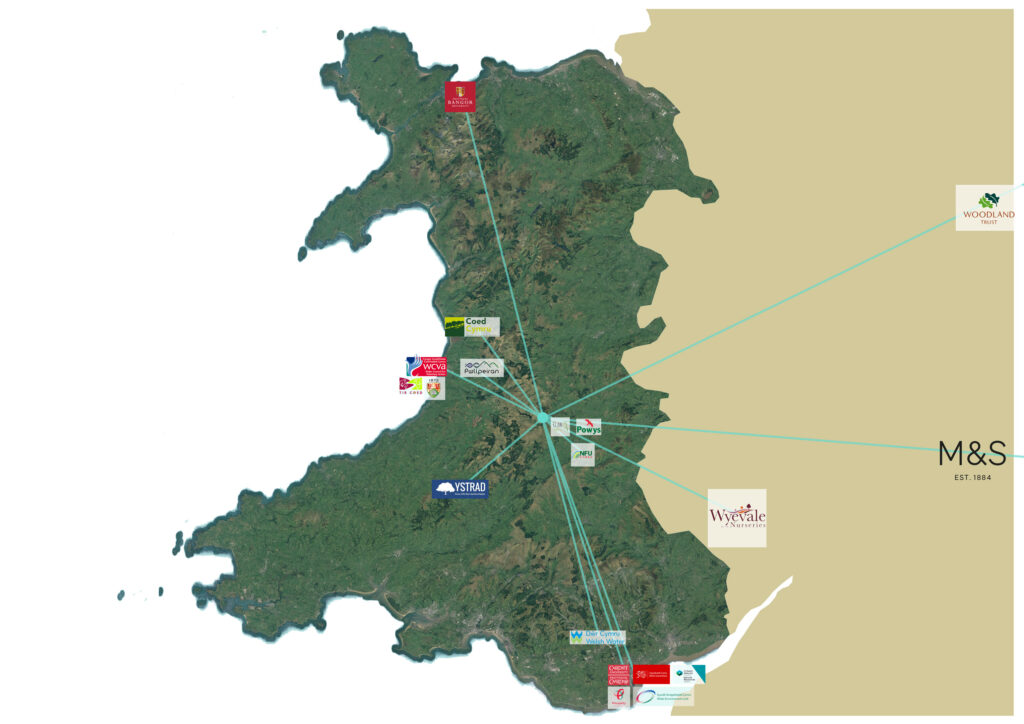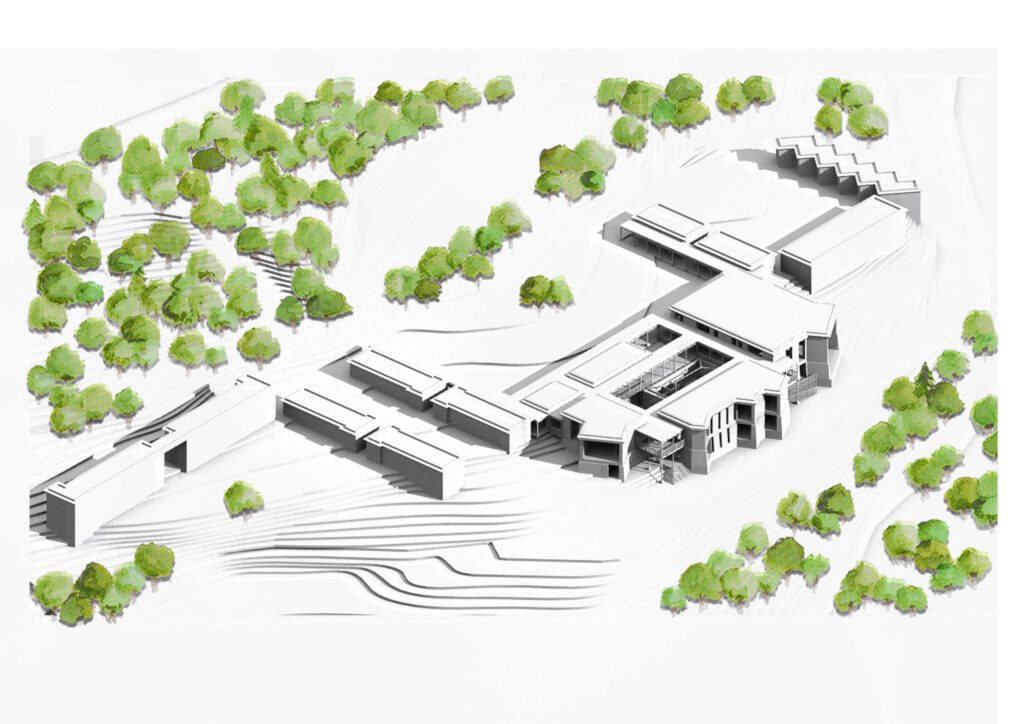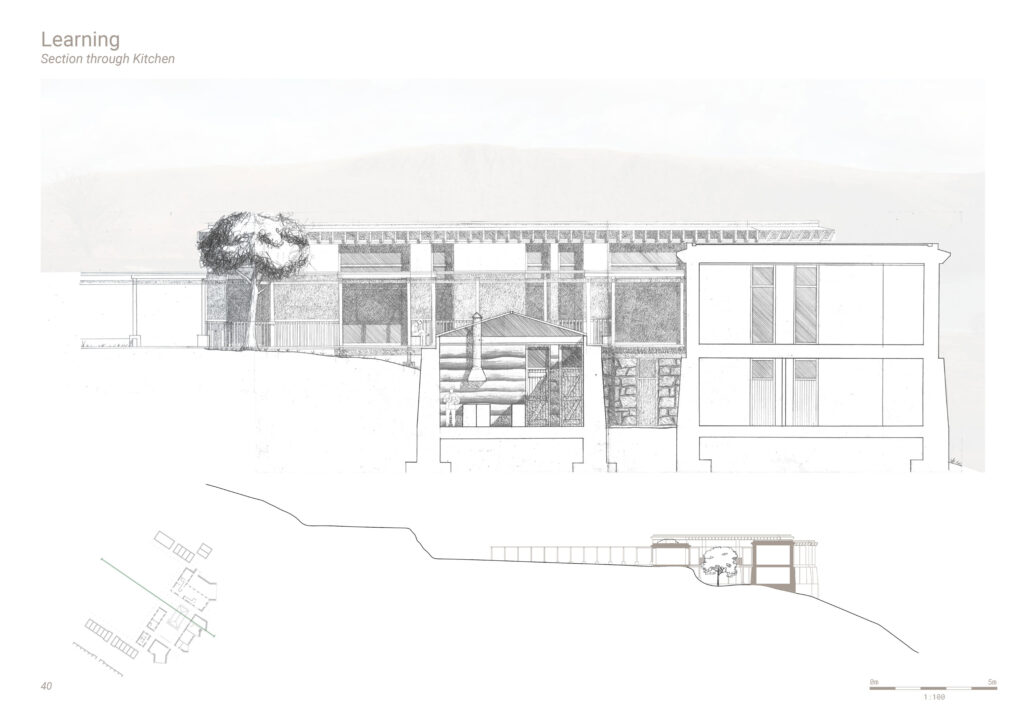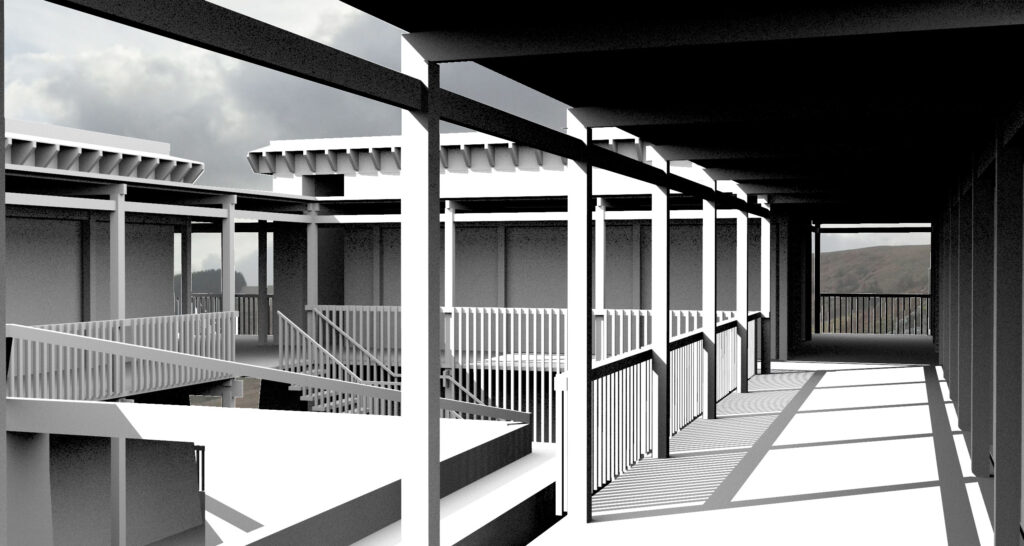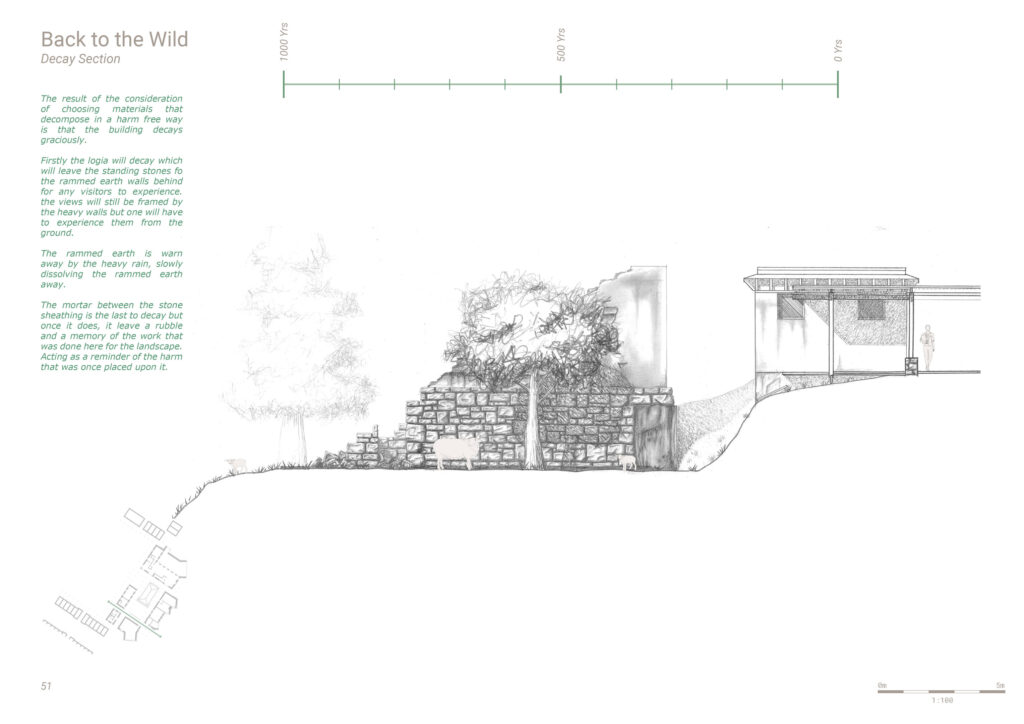The Future of the Elan Valley
This project is placed in the Elan Valley, Mid Wales, where five reservoirs were built to serve and support the development and population of Birmingham. Once upon a time, the Elan Valley was a landscape defined by its lush forestry. However, the intensity and the volume of rainfall in the area alongside the collection of the rainwater has transformed it into a tired landscape. My initial explorations showed that the rainwater has been ‘stripping’ away the nutrients and eroding the topsoil resulting in a highly acidic soil and harsh environment, unable to nurture plants or ultimately to support biodiversity.
Thus, my long-time aim is to return this tired landscape to the lush forestry that once was able to host and nurture biodiversity with the endless effort, work and love from the local farmers, communities and groups and support from national organisations. Increasing the tree coverage of the area will slow down the run-off water, decreasing the erosion of the soil, increasing its fertility, and allowing it to be absorbed deep in the soil while enriching the quality of the water. This is a highly ambitious endeavour which requires robust strategies and long-time planning involving the locals who understand and care for the place as well as large organisations that bring resilience and a particular knowledge.
The Atlantic Forestation Pact is an organisation that helps with the reforestation of past agricultural land in Brazil based on the implementation of strategies deploying a variety of methods of reforestation that benefit the environment and stakeholders. Thus, based on this case study, I identified five bespoke reforestations to the valley: riparian, erosional, native, productive, and agro-forestry. These methods differ from each other on the location of the reforestation and on the species of trees used, as different species have particular root structures affecting the soil in different ways. The reforestation well be conducted by local volunteer groups and NGO’s (e.g. Coed Cymru & Elan Valley trust). National companies (e.g. M&S) will also use local labour to accelerate the rate of reforestation. Furthermore, each type of reforestation is supported by an intervention to allow the reforestation, its process and management. Each of these interventions has its time and once each has fulfilled its duty, they will either be left to decay graciously into the landscape, or they will be repurposed to serve the community in a new way.
The intervention designed in detail is the agricultural restoration building. Correlating with the final phase when the reforestation is nearly completed, the intervention merges classical agricultural methods with bespoke reforestation methods to create a sustainable synergy between the reforestation pact and the National Farmers Union (NFU). This union with the NFU will allow for local products to be used within the kitchen of the intervention for the experimentation of new dishes with local ingredients. The building is placed in a clearance of the forest, this places the building while the landscape is framed by the building. The journey through the building includes framed views of the landscape and views where the user becomes part of the landscape. Time is experienced through the shadows from the building into the clearing and in how the building materials age differently. It is thought that this building one day may be unnecessary or unfit to fulfil its purpose and will decay, returning into the landscape.
Portfolio Extracts
Contact
Email: hoganaj@cardiff.ac.uk
Website Portfolio: https://adamhogan.myportfolio.com/


